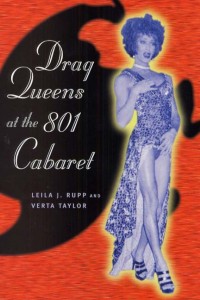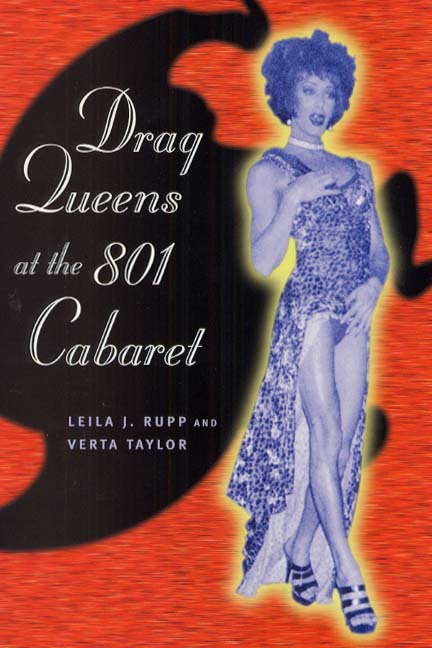 Drag Queens at the 801 Cabaret
Drag Queens at the 801 Cabaret
Leila J. Rupp and Verta Taylor
University of Chicago Press.
256 pages, $27.50
FOR YEARS I’ve been encouraging people I know to write about long-surviving gay institutions. I don’t mean community centers or libraries; I mean places like Kellers leather bar, The Eagle’s Nest, The Spike, and the Mount Morris Baths in Harlem, Hamburger Mary’s in San Francisco, the Gold Coast in Chicago, the Hollywood Spa in L.A., all of which are reportedly being studied by researchers. Add in women’s bars, coffeehouses, and bookstores, and you’ve got a number of microcosms of GLBT history, sociology, and life in the 20th century. Leila J. Rupp and Verta Taylor have trumped all the other researchers with Drag Queens at the 801 Cabaret, an in-depth look at a Duval Street institution in Key West. Scholarly, well-informed, and filled with fascinating people and their stories—the drag queens in their double lives as well as those who associate with them—the book is utterly entertaining. If, like me, you know little and care less about drag and drag queens, you’re in for a world of surprises.
Rupp and Taylor, both professors at the University of California at Santa Barbara, do a professionally thorough job with their material. There’s an excellent short history of drag and another of Key West itself. There are mini-biographies and psychological character studies of those ten or so performers who’ve made the 801 Cabaret a must-see spot in Key West. The authors provide a philosophical and psychological grounding for drag shows, especially such in-your-face shows as that of the performers—Sushi, Scabola, Gugi Gomez, and Kylie—who are present every night at the 801. Theirs is similar to other drag show venues from years past but also very original and, because it is so dependent on the performers, non-replicable.
The authors are a longtime couple who’ve vacationed for years in Florida’s “Conch Republic” and gotten to know the performers personally and professionally. They’re able to present what a single night at the 801 is like behind the scenes, starting when the performers arrive as men and begin to put on their makeup and costumes, transforming themselves from Dean to Milla, from David to Margo, from Timothy to RV. They also present what the show is like from multiple points of view of the audience. Included are the results of audience surveys and taped discussions of focus groups.
Who are these drag queens? Well, like Sushi—the mixed Anglo-Japanese star of the show and of the book—they can be charming and beautiful, drawn to women’s clothing early in life, dressing up to become another person. They became another person psychologically, though not physiologically, as this group all possess male genitals and make a point of “exposing” themselves as men to the audience at the end of every show. Despite this, supposedly straight men still approach the “girls” for sex.
It’s not an easy life. Many of the guys are from poor and broken homes. Their early femininity and propensity for drag cast them to the margins of society, where they often engaged in drug use and prostitution. They all admit that it’s a young person’s life, though the aging Margo belies this assumption, performing well into her retirement years. Many have formed “families” that include straight and gay male club owners. How does their nightly gender transformation affect their sexuality? Usually not at all. Most are gay men who prefer sex with other gay men. It does, however, affect how they’re perceived even out of costume. When talking about them, people can change pronouns in a single sentence.
Rupp and Taylor show how the drag community became a crucial component of gay life in Key West. Many tourists drive in from southern American cities with rigid ideas of gender and walk away from the 801 Cabaret politicized on several levels. As one of the performers says, “We’re not just lip-synching up here. We’re out to show that what you think is, isn’t.” In a scholarly final chapter, the authors discuss how the 801 and other drag shows “express opposition” to the culturally encoded ways of different groups and “provide a lens through which we can view drag as a collective boundary-crossing strategy aimed deliberately at changing gender and sexual systems.”
________________________________________________________
Felice Picano’s novel Dryland’s End will be republished this summer, and his new memoir, Fred In Love, will come out this fall.





